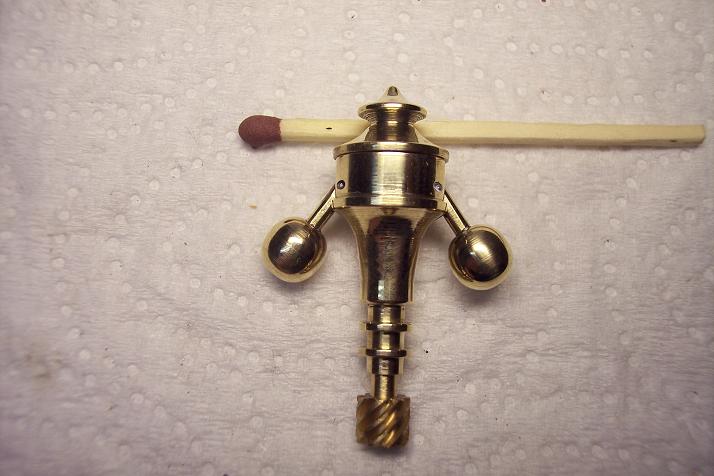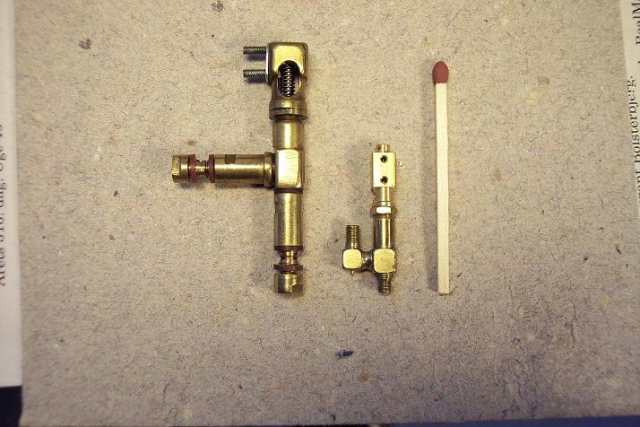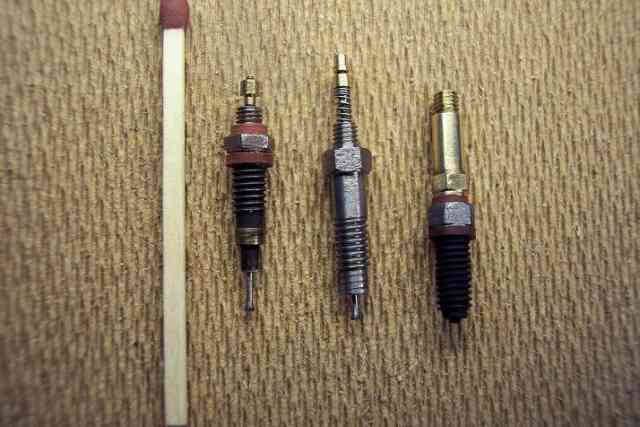|
About my model making.
On this photo I am sitting behind some of my hot-bulb engines.
Free lance - Four stroke - Lamp start - Hot-bulb - Engines.
My name is Find Hansen, and I live on an island called Bornholm, a part of Denmark.
I have made model engines for many years, starting with steam engines, then four stroke
gas engines with high tension or hot tube ignition, and my latest models are four stroke-
lamp start - hot-bulb - engines, with a bore 20mm. and a stroke 30-36mm.
None of my engines are scale models, but so called free lance engines of my own design,
but very inspired of engines built in England around the century shift 1890-1920 such as,
Crossley - Hornsby - Blackstone, etc.
I do like to make the drawings, and all of the parts for the engines by my self.
Some of the parts that could have been made in a foundry are constructed such as:
The base - the flywheel - the cylinder - etc.
The crankshafts I make, are not constructed by several parts, but made from a solid round
or a flat square steel bar.
The Hot-bulb System.

Hot-bulb cover, hot-bulb, vaporiser tube. Hot-bulb onengine.
There are some difficulties in making : A four stroke - lamp start - hot-bulb - engine, with
injected fuel, and I will start with the hot-bulb system.
It is difficult to scale a hot-bulb system from the" big engine" to a small engine, if you want
the engine to run without a continuos flame from a blowlamp. The heat from the hot-bulb
will soon escape to the cylinder head and water cooled injector, because of the short distance
between theese, so I had to make my own hot-bulb system.
After making several different hot-bulbs, and spending many ours with experiments,
I ended up with a useful one.
To prevent that heat from the hot-bulb escapes to the cylinder head, the hot-bulb got a
"long" thin walled neck. To prevent that heat escapes from the hot-bulb to the injector, I
have moved the injector from the hot-bulb to the cylinder head, thereby having an
indirect injection, not into the hot-bulb, but on a vaporiser tube that is conected to the
inside end of the hot-bulb. So when the hot-bulb is heated the vaporiser tube is heated too.
Governor System.

Fly-ball governor. Fly-ball governor on engine.
Then I had to make a govenor system, an injection pump, and a useful injector.
The governor system could be a hit and miss system, but I rather like a fly ball governor
controlled injection pump.
So I made a system, where a fly ball governor move a conical bar in and out between the
injection pump cam and the injection pump plonger, thereby changing the stroke of the
pump plonger.
Injection Pump.

Injection pumps. Left, my very first pump. Injection-pump on 1 cyl. engine.
The injection pump is an ordenary type with one in-let, and one out-let ball valve, and a
plonger. The valve balls are 1mm. and the plonger is 2mm. thick. I found, that when the
engine runs idle speed about 360 revelutions with no load, the plonger only moves 0,03mm.
Injectors.

Injectors. Injector tester.
The injector has a spring loaded injector valve, with a valve head angle of 14 degrees and
a valve stem 0.90mm thick. The valve stem is treaded so that the spring can be adjusted
to the right fuel pressure with one nut, and locked with another nut.
Blowlamps.

Blowlamps on bottle-corks. Blowlamp on engine.
The blowlamp works with lighter gas, and the gas is filled into the bottom of the blowlamp,
and the flame is controled by a needle valve.
The problem with a blowlamp so small , that must deliver heat enough to warm the
hot-bulb,is the short thin flame tube. Turning to much up for the gas needle valve, and
the flame will blow out. So I cross-bored the flame tube, so that a small bar could be
placed here, there by spreading the fast gas flow, to a slower gas flow, and that worked.